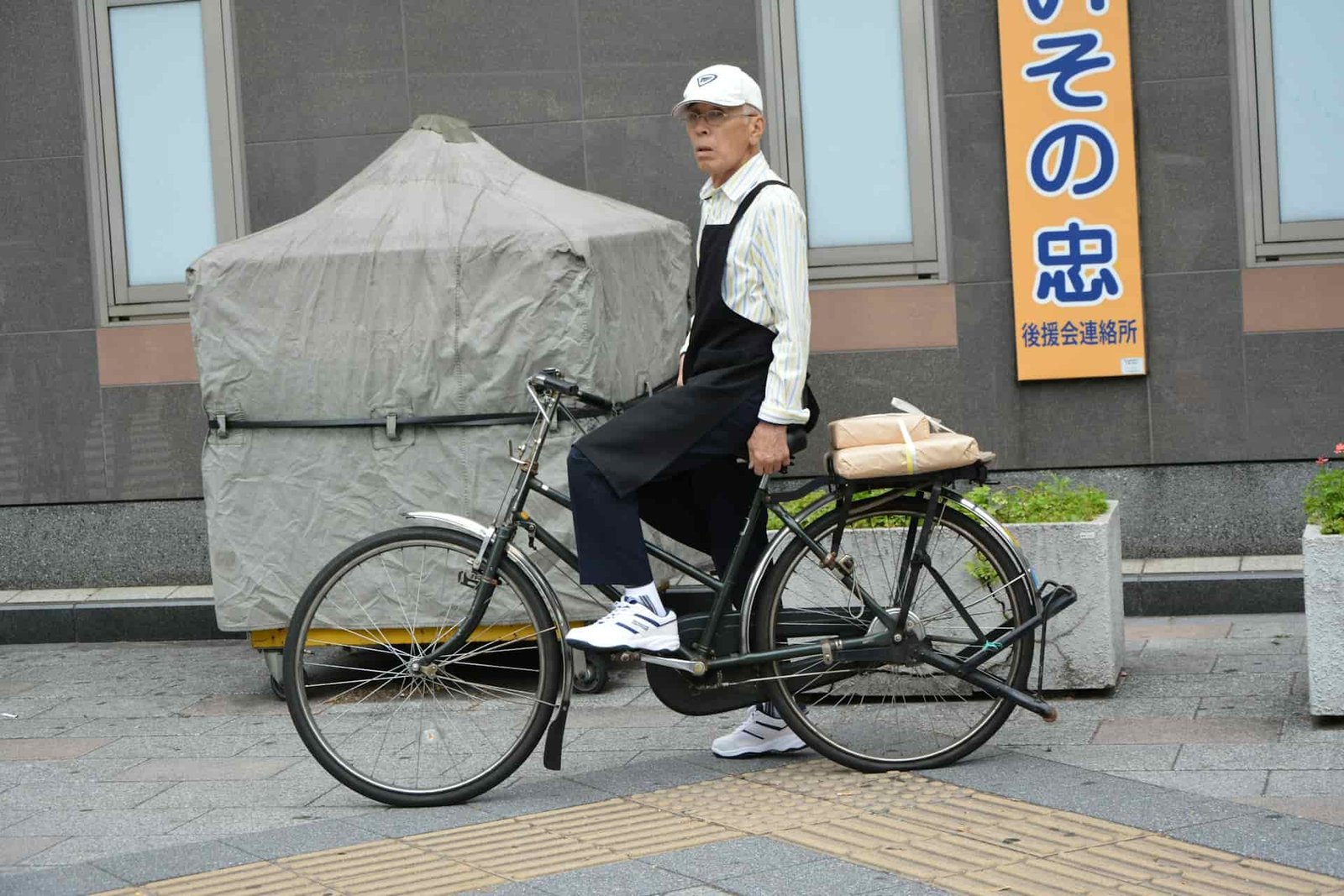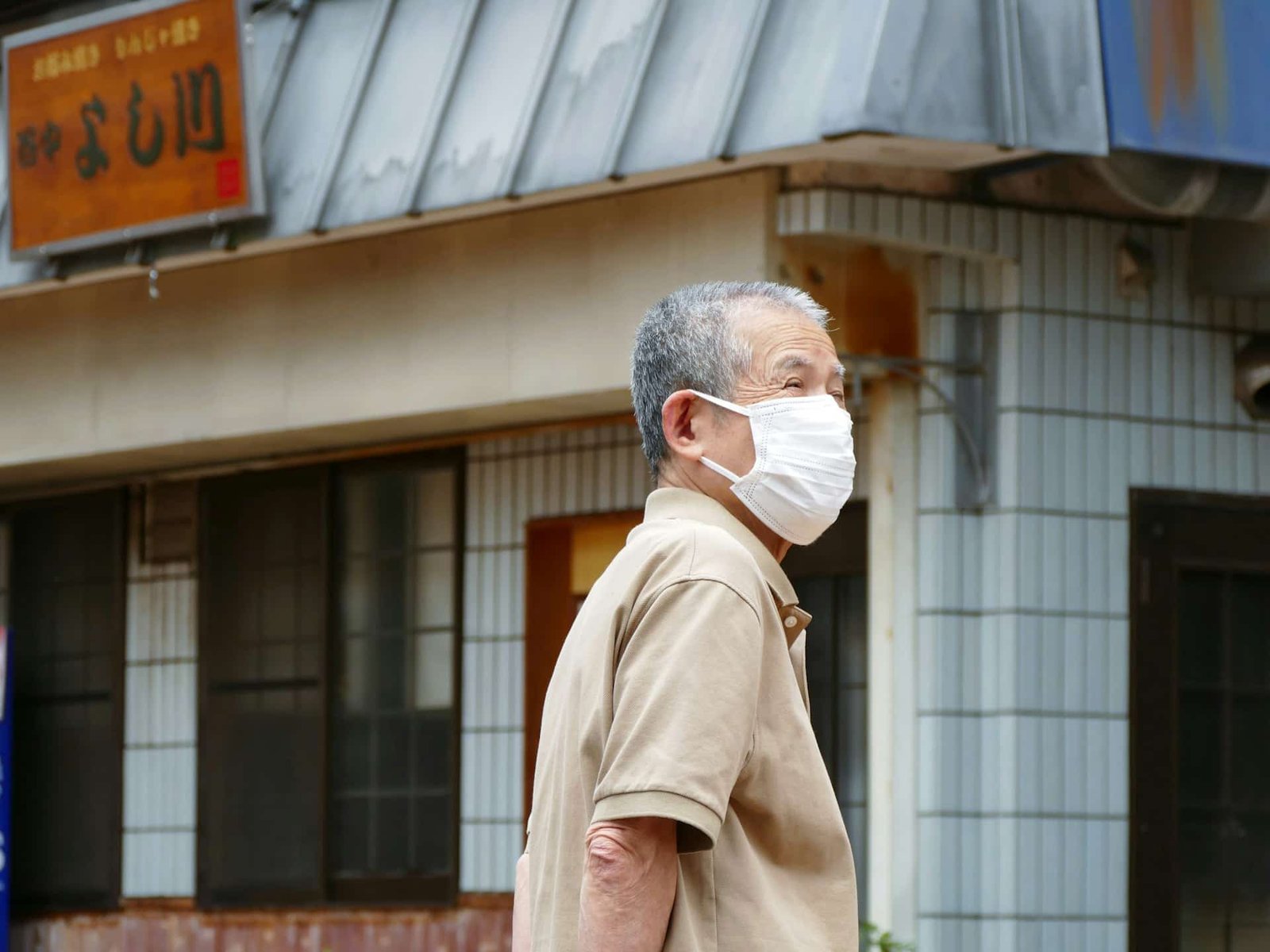Why You See So Many Elderly Workers in Japan
From construction sites to taxis, Japan’s seniors are employed everywhere.
Here is a closer look at what kind of jobs elderly workers in Japan are doing and why.
The first week I lived in Kyodo, Tokyo, I found the (warning, incoming old-man level wordplay) lifesaver that is a Life Supermarket.
Life stores are like local institutions, often combining supermarkets with a first-floor mini-mall store, selling everything from corkscrews to clothes to luggage. It quickly became my go-to for everyday shopping.
Another notable development was a growing sense of wonder about the two old men in crisp safety vests, who guided cars in and out of the Life parking lot at all times of the day, come rain or shine.
My Scandinavian roots couldn’t help but marvel at the inefficiency of having gentlemen in white gloves, waving glowing red batons, direct traffic. It seemed like such a waste. Surely, the drivers could navigate a left turn onto a single-lane road with the assistance of a 75-year-old traffic conductor.
This was far from the only place I noticed elderly employees. I spotted them working in station entrances, building lobbies, delivery bays, and driving taxis. My foreigner brain initially filed it under “quirky Japan.” I have since changed my mind on this while learning more about Japan and the sheer number of older people working.
In 2022, Japan had 9.1 million workers aged 65 or older, the nineteenth consecutive year that number has grown. Seniors now make up 13.6% of the workforce, or about one in seven workers. Employment rates are especially high among those just past retirement: more than half of people aged 65–69 still work, as do a third of those aged 70–74, both record highs.
All of which brings us to the question of why.
A greying workforce by necessity
Traditionally, Japanese workers, especially the salaryman segment, worked hard and retired young(ish). The usual retirement age was around 60. That is no longer the case.
As Japan has aged, the workforce has shrunk. A 2024 survey found that more than half of Japanese companies face a shortage of full-time workers. Seniors are one of the few pools left to draw on in a country where nearly 30% of the population is over 65.
This reality is reflected in policy changes, particularly the 2021 revision of Japan’s Act on Stabilisation of Employment of Elderly Persons, which urges companies to extend retirement or rehire employees up to the age of 70. Relatedly, public bodies like JEED, the Japan Organisation for Employment of the Elderly, are tasked with creating more opportunities for older workers.
The economic need also extends to the elderly workforce itself. A 2019 government calculation suggested that retirees might need ¥20 million in savings to survive a 30-year retirement. The figure is likely a low estimate, given the continued rise in prices of daily goods over the last five years.
Today, pension shortfalls are common: in 2023, retired couples received an average of ¥210,000 per month in benefits, but their expenses approached ¥250,000, a gap exacerbated by inflation and a weak yen.

Why keep working if you don’t have to?
However, surveys also show that many senior workers are not seeking employment just for financial reasons.
Many seniors cite health, routine, and social connections as reasons to continue working.
A 2024 Mainichi survey of older workers found that around 70% believed they could continue working into their 80s. Asked why they returned to work after retirement, common answers included “to stay healthy,” “to cover medical expenses,” “because I have free time,” and “to participate in society.”
What jobs are seniors actually doing in Japan?
Taking a look across the job landscape shows specific areas where many elderly find employment:
- Security & traffic control (警備員 / keibiin): Roughly 590,000 nationwide; 64% are over 50, and nearly 18% are 70+. A visible, high-demand sector thanks to construction and event management.
- Apartment caretakers: Companies like Mitsui Fudosan Residential employ over 1,350 older workers in building maintenance and resident support roles.
- Retail, services, health & welfare, agriculture: The most common industries overall.
- Silver Jinzai network: Around 700,000 registered seniors take flexible gigs such as gardening, cleaning, and household support, often paid ¥870–1,000/hour depending on the task.
- Taxis and transport: With driver shortages, older cabbies are common. Policymakers are debating raising age caps, even as safety concerns remain.

The Japanese mindset: reliability and visible safety
Why do these jobs suit older workers so well? Part of the answer lies in Japan’s preference for visible, human interaction.
A younger society might rely more on barriers, cameras, or automation, but Japan continues to favour the human touch. A traffic marshal waving cars through, or an elderly caretaker greeting residents, provides reassurance in a way technology cannot.
This view is shared by many employers, who say that older workers bring “common sense,” punctuality, and calmness under pressure—qualities prized in low-risk, customer-facing roles.
The mindset is also personal. Surveys show that many retirees view jobs as beneficial for their mental and physical health. Rather than being “put out to pasture,” they prefer continuity—the rhythm of uniforms, schedules, and interactions. In a society that values order and contribution, work is not just an economic act but a social one.
The wage squeeze
Still, not all is rosy. Wages in many “senior havens” such as traffic control or apartment care hover around ¥180,000 a month, far below what many earned in their prime and often insufficient to cover rising costs.
And while older workers help plug labour shortages, Japan still faces a projected shortfall of 6.44 million workers by 2030, meaning seniors alone cannot close the gap.
The ikigai of working
I want to conclude with a few personal thoughts and observations on this subject matter.
I think it is hard to fully appreciate the importance of concepts like “belonging” and “contributing” in Japan. It requires either spending extended time here or coming from a similar cultural background to fully appreciate. These concepts manifest in many ways – and will start to influence how you see things in Japan.
Personally, it took me a few years to move from “this is so inefficient” to “they have a societal purpose,” where the elder gentlemen waving red batons outside of Life were concerned.
I am not saying that this setup is perfect or that all (or even most) seniors work because they want to have a societal purpose. What I am saying is that this sense of ikigai (生き甲斐), loosely translated as one’s reason for being, comes up repeatedly in Japanese culture, including in ways that foreigners (including me, despite having been here for more than ten years) may not fully understand or appreciate.
For all the statistics in this article, it is the voices of older workers themselves that make the picture vivid.
“Through my work, I want to have enjoyable conversations,” one retiree told surveyors.
Another said, “I want to support the current generation of parents by reflecting on my own upbringing.”
The question then becomes if this is a why for working that you recognise from your country or something unique to Japan and its ikigai.
Photos:
